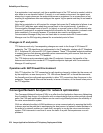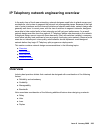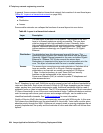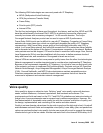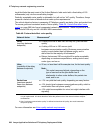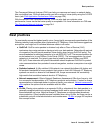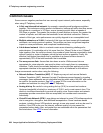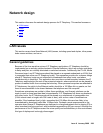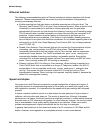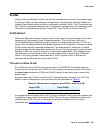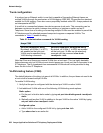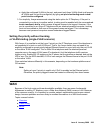
IP Telephony network engineering overview
286 Avaya Application Solutions IP Telephony Deployment Guide
trunk that links the west coast of the United States to India could add a fixed delay of 150
milliseconds (ms) into the overall delay budget.
Perfectly acceptable voice quality is attainable, but will not be “toll” quality. Therefore, Avaya
presents a tiered choice of elements that make up the requirements.
The critical objective factors in assessing IP Telephony quality are delay, jitter, and packet loss.
To ensure good and consistent levels of voice quality, Table 49:
Factors that affect voice
quality on page 286 lists Avaya’s suggested network requirements. These requirements are
true for both LAN only and for LAN and WAN connections.
For more information see Voice quality network requirements
.
Table 49: Factors that affect voice quality
Network factor Measurement
1
1. All measurement values are between endpoints because this document assumes that IP Telephony is
not yet implemented. All values therefore reflect the performance of the network without endpoint
consideration.
Delay
(one-way between
endpoints)
● A delay of 80 ms or less can, but may not, yield the best
quality.
● A delay of 80 ms to 180 ms can yield
business-communication quality. Business-communication
quality is much better than cell-phone quality, and is
well-suited for the majority of businesses.
2
● Delays that exceed 180 ms might still be quite acceptable
depending on customer expectations, analog trunks used,
codec type, and so on.
2. Also, “business-communication quality” is defined as less than toll quality, but much better than
cell-phone quality.
Jitter
(variability of the delay
between endpoints)
● 20 ms, or less than half the sample size, for the best quality.
Note:
Note: This value has some latitude, depending on the
type of service that the jitter buffer has in
relationship to other router buffers, the packet size
used, and so on.
Packet loss
(maximum packet/
frame loss between
endpoints)
● <1% can yield the best quality, depending on many factors.
● <3% should give business-communications quality, which is
much better than cell-phone quality.
2
● >3% might be acceptable for voice, but might interfere with
signaling.



